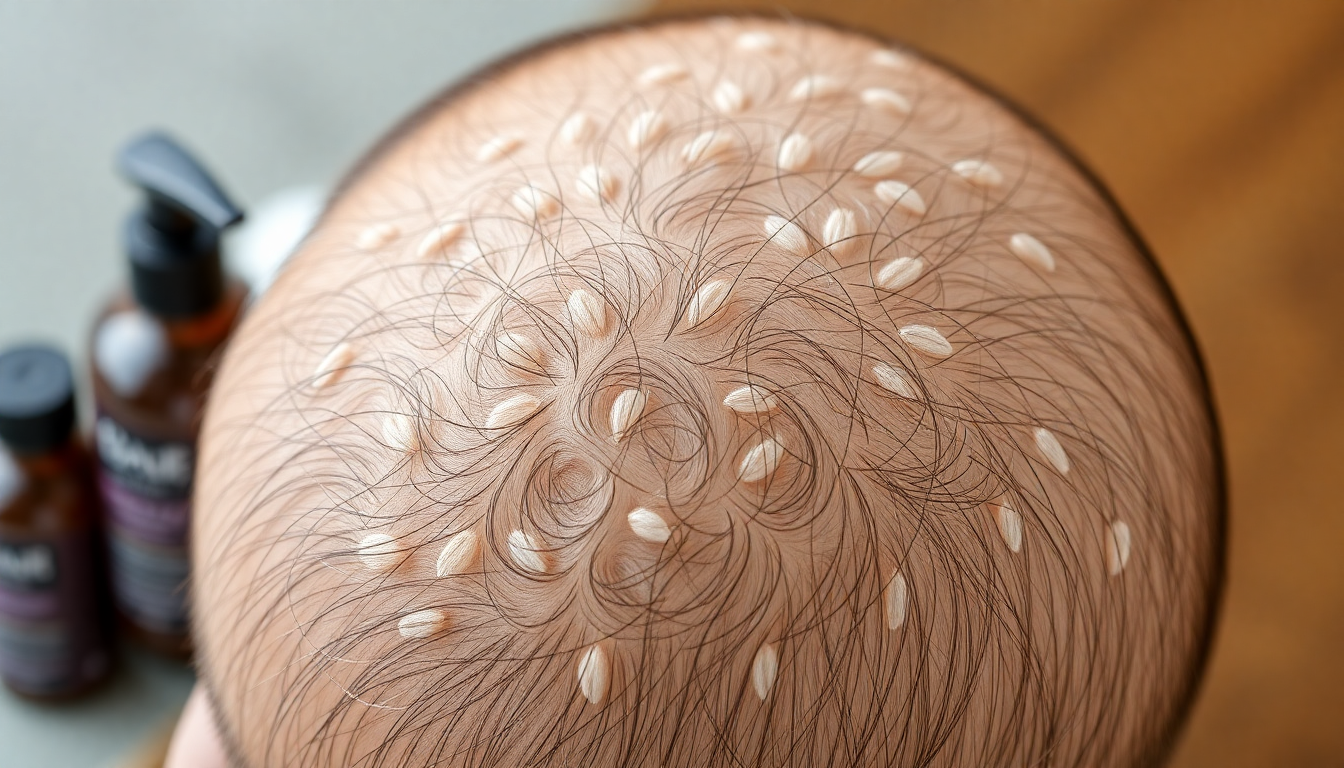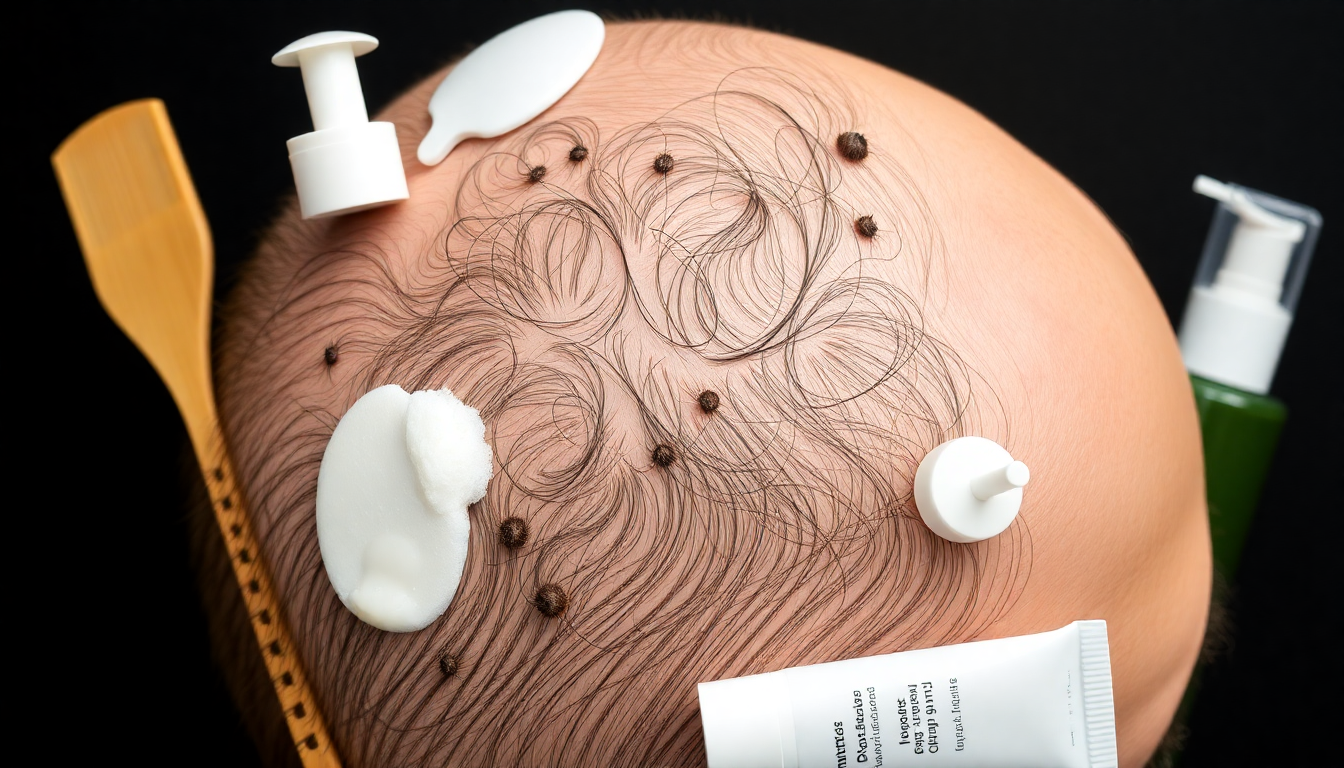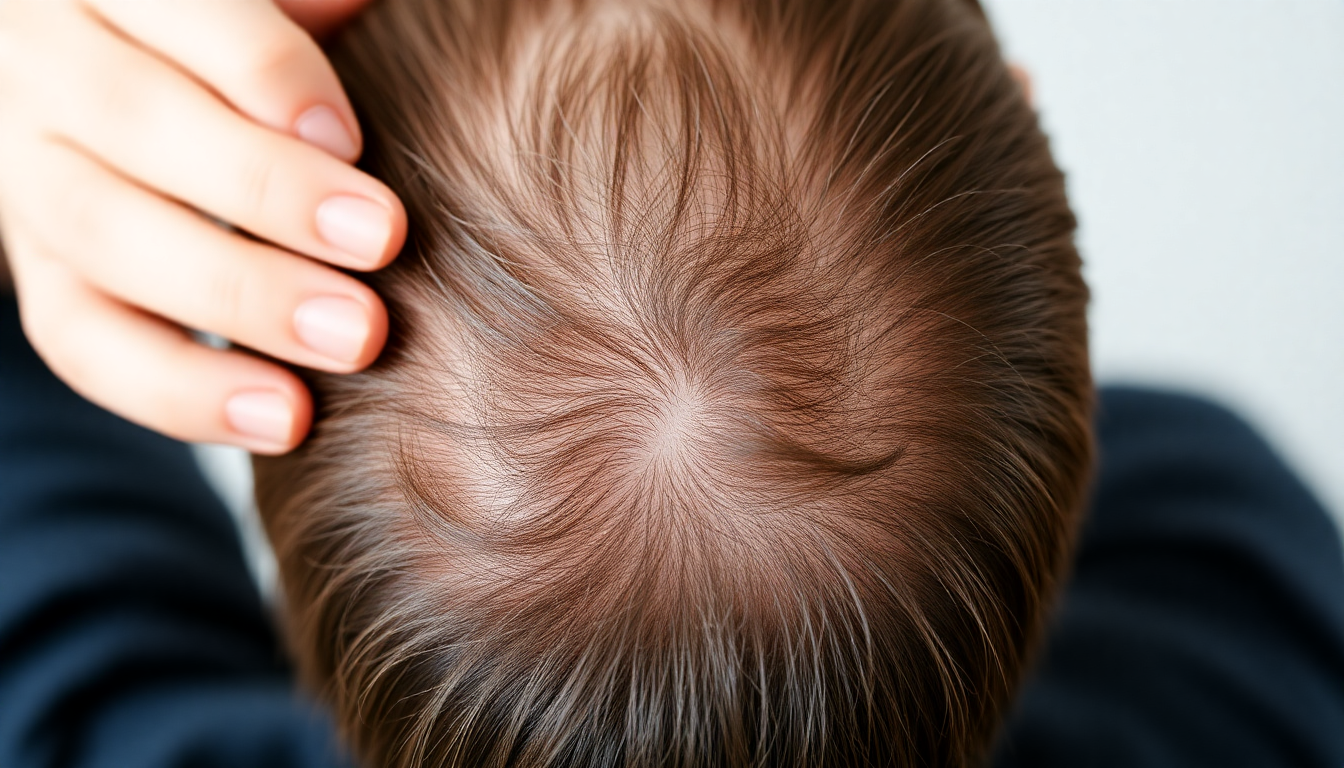Introduction: The Scalp Rx Blueprint You Can Follow
Improving hair density is rarely a single‑product problem. The most consistent results come from an approach that treats the scalp as a dynamic organ: nourishing follicles biochemically with peptide serums, stabilizing the microbiome and barrier with prebiotic scalp therapies, and amplifying local physiology with at‑home devices. This comprehensive guide explains the science, shows comparative pros and cons, and gives step‑by‑step routines you can adapt for your goals and schedule.

What You’ll Learn in This Longform Guide
- How peptide serums, prebiotic therapies and devices work and why they complement each other.
- Detailed ingredient and device deep dives so you can choose safe, effective products.
- Multiple step‑by‑step routines (beginner → advanced → clinical adjuncts) tailored by hair type and diagnosis.
- Safety, troubleshooting, measurement and how to integrate with medical treatments.
- Practical shopping checklists and budget vs premium pairing suggestions — with curated options from Eelhoe Cosmetics to get started.
Section 1 — The Science: How Each Modality Contributes to Density
Peptide Serums: Targeted Cellular Signaling
Peptides are short chains of amino acids that act as signaling molecules to nearby cells. When formulated for the scalp, specific peptides can:
- Support extracellular matrix and follicle anchoring (e.g., collagen‑promoting peptides).
- Modulate inflammation and repair (some peptides have anti‑inflammatory or antioxidant properties)
- Support keratinocyte and dermal papilla cell function which are crucial to hair cycle regulation.
Common peptide ingredients found in topical hair serums include GHK‑Cu (copper peptide), Acetyl Tetrapeptide‑3, Myristoyl Pentapeptide‑17 and Biomimetic peptides designed to mimic growth factors. Formulation matters: the peptide must be stabilized and delivered in a vehicle that reaches the follicular region.

Prebiotic Scalp Therapies: Microbiome and Barrier Optimization
The scalp hosts diverse microbes. A balanced microbiome supports barrier function, reduces chronic low‑grade inflammation and minimizes flake/itch — all of which create a healthier environment for hair growth. Prebiotic therapies include ingredients like inulin, fructooligosaccharides (FOS) and glucose oligosaccharides that selectively feed beneficial microbes or include microbial lysates that calm immune responses.
- Benefits: reduced irritation, improved comfort, improved topical tolerance (fewer reactions), and a better habitat for follicles.
- Formulation clues: gentle surfactants, pH close to physiologic scalp pH (~4.5–5.5) and declared prebiotic ingredients on labels.

At‑Home Devices: Mechanical and Photobiomodulation Effects
Devices commonly used at home for density improvement fall into three categories:
- LLLT (low‑level light therapy): Uses red and near‑infrared wavelengths (commonly 630–830 nm range) to increase cellular energy (ATP) and support follicular cell metabolism.
- Microneedling: Creates controlled microchannels to stimulate wound repair pathways and enhance topical absorption. Depths from 0.25 mm to 1.5 mm are used in different contexts; at‑home devices typically use 0.25–0.5 mm rollers or pens.
- Scalp massagers and sonic applicators: Mechanically increase blood flow, distribute serums, and offer a low risk way to improve compliance and circulation.

Section 2 — Comparative Pros & Cons (Detailed)
-
Peptide Serums
- Pros: Targeted biochemical support, typically low systemic risk, easy to include nightly.
- Cons: Efficacy depends on peptide identity, concentration, vehicle and consistency; results take months.
-
Prebiotic Therapies
- Pros: Improve scalp comfort and barrier, support tolerance of active ingredients, reduce dandruff/irritation.
- Cons: Indirect effect on density — they create a better environment rather than directly stimulating follicles.
-
Devices
- Pros: Can amplify effects of topicals, non‑invasive, measurable protocols (LLLT frequencies and durations).
- Cons: Requires adherence, some devices are expensive, and microneedling requires hygiene and technique to avoid adverse effects.
Section 3 — Ingredient Deep Dives (What to Look For)
Key Peptide Types and What They Do
- GHK‑Cu (Copper peptide): Known for wound repair and matrix support; helps with follicle anchoring and may reduce local oxidative stress.
- Acetyl Tetrapeptide‑3 & related peptides: Often marketed for scalp fortification and stimulation of follicle cells.
- Myristoyl Pentapeptide‑17: Claimed to support keratin/ hair shaft strength and growth signaling.
- Delivery vehicles: liposomes, microemulsions and peptides formulated with permeation enhancers are more likely to reach follicular openings.
Prebiotic Ingredients to Prefer
- Inulin, fructooligosaccharides (FOS): Prebiotic sugars that selectively nourish beneficial microbes.
- Saccharide Isomerate or Glucose Oligosaccharides: Bind to the skin/scalp and improve hydration while supporting microbiota.
- Microbial lysates: Provide immune‑modulating fragments from safe microbes that can reduce inflammation.
Device Specs That Matter
- LLLT: Look for wavelength 630–830 nm and power output that matches clinical devices. Session durations often 10–30 minutes depending on the device.
- Microneedling: At‑home devices should specify needle length and sterilization guidance. Avoid aggressive depths at home unless supervised by a professional.
- Massage devices: Waterproof, battery life, variable speeds and easy cleaning for daily use.
Section 4 — Practical, Progressive Routines
Below are fully spelled out routines by commitment level and hair concern. Each routine includes frequency, tools, and safety notes.
Starter Routine: 0–3 Months (Low Commitment)
- Frequency: Daily adherence to basic steps; weekly scalp cleanse.
- Steps:
- Every 2–4 days: Use a gentle prebiotic scalp cleanser to maintain balanced microbiome and avoid stripping oils. (prebiotic scalp cleansers)
- After towel dry: Apply peptide serum to target areas (2–4 drops per zone), massage gently with fingertips or a silicone massager for 1–2 minutes.
- Nightly: Reapply peptide serum if recommended; use a leave‑on formulation to maximize contact time while you sleep.
- Safety: Patch test new serum for 48 hours; avoid strong exfoliating acids on the scalp while using peptide serums.
Intermediate Routine: 3–6 Months (Targeted Stimulation)
- Frequency: LLLT 3× weekly, microneedling 1× every 10–21 days (0.25–0.5 mm), peptide nightly, prebiotic cleanser 1–3× weekly.
- Steps:
- Cleanse with prebiotic shampoo and towel dry thoroughly.
- LLLT session (if using): 10–20 minutes depending on device protocol — most users do LLLT on a dry scalp then apply serum.
- On microneedling days: perform microneedling before applying serum; choose a calming peptide serum designed for post‑needling use.
- Rest of days: nightly peptide serum + 2–3 minute scalp massage to support circulation and absorption.
- Monitoring: Take baseline photos and repeat every 8–12 weeks. Note any increased shedding (telogen effluvium can occur transiently with some stimulatory treatments) and pause if severe.
Advanced Routine: 6–12+ Months (Multimodal, Measured)
- Frequency: Maintain LLLT 3× weekly or as recommended; microneedling 1× every 3–4 weeks; peptide serum nightly; prebiotic maintenance cleansing.
- Steps:
- Consult with a dermatologist before combining with prescription therapies. If on topical minoxidil or oral treatments, get clearance and timing guidance.
- Alternate microneedling and LLLT to avoid overstimulation; for example, microneedling every 3–4 weeks, LLLT 3× weekly on non‑needling days.
- Rotate supportive topical actives seasonally (for example, add antioxidant serums in higher UV months) but keep peptides consistent.
- Documentation: Maintain a photo diary and simple spreadsheet tracking dates, procedures, products and subjective comfort.
Section 5 — Tailoring by Hair Type and Diagnosis
Androgenetic (Pattern) Thinning
- Strategy: Use peptide serums and LLLT as adjunctive, and discuss prescription therapies (topical minoxidil, oral finasteride for men) with a clinician. Prebiotics to maintain scalp health and reduce irritation from topicals.
- Timing: Expect 3–6 months before visible improvement; combine strategies to maximize retention and regrowth.
Diffuse Thinning / Telogen Effluvium
- Strategy: Focus first on identifying triggers (stress, nutrition, medication). Use prebiotic therapies to improve scalp comfort and peptides to support recovery. Avoid aggressive needling until inflammation is resolved.
Alopecia Areata and Autoimmune‑Mediated Loss
- Strategy: These conditions require medical management. Discuss immune‑modulating options with your provider before adding stimulation devices or microneedling. Peptides and prebiotics can be supportive after clearance.
Section 6 — Safety, Patch Testing, & Managing Side Effects
- Always patch test new serums (behind the ear or inner arm) for 48–72 hours.
- Avoid mixing multiple potentially irritating actives (strong acids, retinoids, high alcohol tonics) with microneedling.
- If severe redness, swelling, pain or infection occurs after microneedling, seek medical evaluation promptly.
- LLLT is generally safe but discuss photosensitizing drugs with your clinician.
- Stop a product immediately if you experience burning or blistering and consult a professional.
Section 7 — Cost, Time & Compliance Considerations
The best routine is the one you can follow. Here are practical frames to choose a regimen based on budget and time:
- Budget (under $100/month): Prioritize a proven peptide serum + prebiotic shampoo + manual massager. Use affordable LLLT combs or entry helmets if possible.
- Midrange ($100–$300/month): Higher concentration peptide serums, a quality LLLT device, and a microneedling pen with professional guidance.
- Premium (over $300/month): Clinical‑grade devices, professional in‑office microneedling sessions, and curated serum/device pairings from specialized brands.
Section 8 — Product Selection Checklist & Shopping Guide
- Look for clearly labeled peptides with named ingredients and, where possible, concentration transparency.
- Prefer prebiotic cleansers that list inulin, FOS or microbial lysates and avoid harsh sulfates or high alcohol content.
- Devices: check manufacturer protocols, warranty, certifications and user reviews. Ensure easy cleaning and replacement parts for microneedling pens/rollers.
- Consistency: choose products you can use daily (texture, scent and ease of application matter for adherence).
Curated pairing example: a peptide serum formulated for nightly use plus a prebiotic scalp cleanser from the same brand helps ensure ingredient compatibility and consistent pH. Explore compatible options at Eelhoe Cosmetics — they curate peptide serums, prebiotic scalp therapies and device‑friendly accessories to simplify regimen building. (peptide serums for hair density, prebiotic scalp therapies)
Section 9 — Integration with Medical Treatments
If you’re using prescription treatments (topical minoxidil, oral finasteride, spironolactone, or immunomodulators), coordinate timing and supervision with your prescribing clinician. Important points:
- Microneedling can increase absorption of topical drugs; only use it under medical guidance if you combine it with prescription topicals.
- Some prescription regimens can cause transient shedding initially; don’t discontinue without consulting your clinician.
- Prebiotic and peptide support is often complementary and may reduce irritation from medicated topicals.
Section 10 — Realistic Timelines and What Counts as Success
- First 4–12 weeks: improved scalp comfort, reduced itching, better tolerance of treatments.
- 3–6 months: initial visible improvements in coverage and thickness for many users if adherence is good.
- 6–12 months: stronger evidence of sustained regrowth or density improvement in responders.
- Success metrics: standardized photos, reduced visible scalp, thicker individual hair shafts and patient satisfaction.
Section 11 — Troubleshooting Common Issues
- Increased shedding early on: can be a transient phase as follicles cycle — monitor for >3 months and consult if shedding is excessive or prolonged.
- Persistent itch or flaking: step up prebiotic cleansing and consider a brief consult with a trichologist or dermatologist.
- Device soreness: reduce microneedling depth or frequency and ensure proper sterilization.
Section 12 — Case Examples & Sample Plans
Case A — 32‑Year‑Old Female, Diffuse Thinning After Childbirth
- Initial plan: Focus on nutrition, gentle prebiotic cleansers, peptide serum nightly and avoid needling for 2–3 months while monitoring shedding.
- If persistent after 4–6 months: add LLLT 3× weekly and consult for hormonal evaluation.
Case B — 45‑Year‑Old Male, Early Pattern Thinning
- Initial plan: Discuss medical options (topical/oral) with clinician; add peptide serum nightly, LLLT 3× weekly and prebiotic shampoo weekly.
- Consider clinic microneedling every 6–8 weeks for booster sessions if tolerated and after clinician clearance.
Section 13 — Frequently Asked Questions (FAQ)
-
Q: Can I use peptides with minoxidil?
A: Often yes, but sequence matters. Use LLLT and peptide serums as complementary; consult your clinician about applying minoxidil relative to microneedling. -
Q: How long until I stop seeing improvement?
A: Improvements can continue for 6–12 months; many people maintain treatments long term to preserve gains. -
Q: Are microneedling and LLLT painful?
A: LLLT is painless. Microneedling can cause discomfort depending on depth — use topical numbing only if advised by a professional for deeper, in‑clinic sessions.
Where to Find Compatible, Curated Options
If you want a curated start point with products designed to work together, consider the targeted lines at Eelhoe Cosmetics. They feature paired peptide serums for hair density, gentle prebiotic scalp therapies and accessory items for at‑home devices. Choosing products from a single curated range reduces the risk of incompatible pH, irritating surfactants or mixing actives that undermine results.

Conclusion — Build Your Scalp Rx, Track It, and Buy with Confidence
Improving hair density is a journey. The Scalp Rx Blueprint combines peptide serums (to signal and support follicles), prebiotic scalp therapies (to create a stable, low‑inflammation environment) and at‑home devices (to amplify circulation and cellular energy). Start conservatively, track consistently, and escalate to combined protocols if tolerated.
If you want to start with curated, compatible products that simplify regimen building, explore the specialist selections at Eelhoe Cosmetics. Their collections include evidence‑minded peptide serums for hair density and gentle prebiotic scalp therapies that pair well with at‑home devices — so you can buy a streamlined kit and begin your Scalp Rx today.
Note: This article provides informational guidance and is not a substitute for medical advice. If you have significant hair loss, an underlying medical condition, or are on prescription medications, consult a dermatologist or healthcare provider to build a supervised plan.




Leave a comment
All comments are moderated before being published.
यह साइट hCaptcha से सुरक्षित है और hCaptcha से जुड़ी गोपनीयता नीति और सेवा की शर्तें लागू होती हैं.